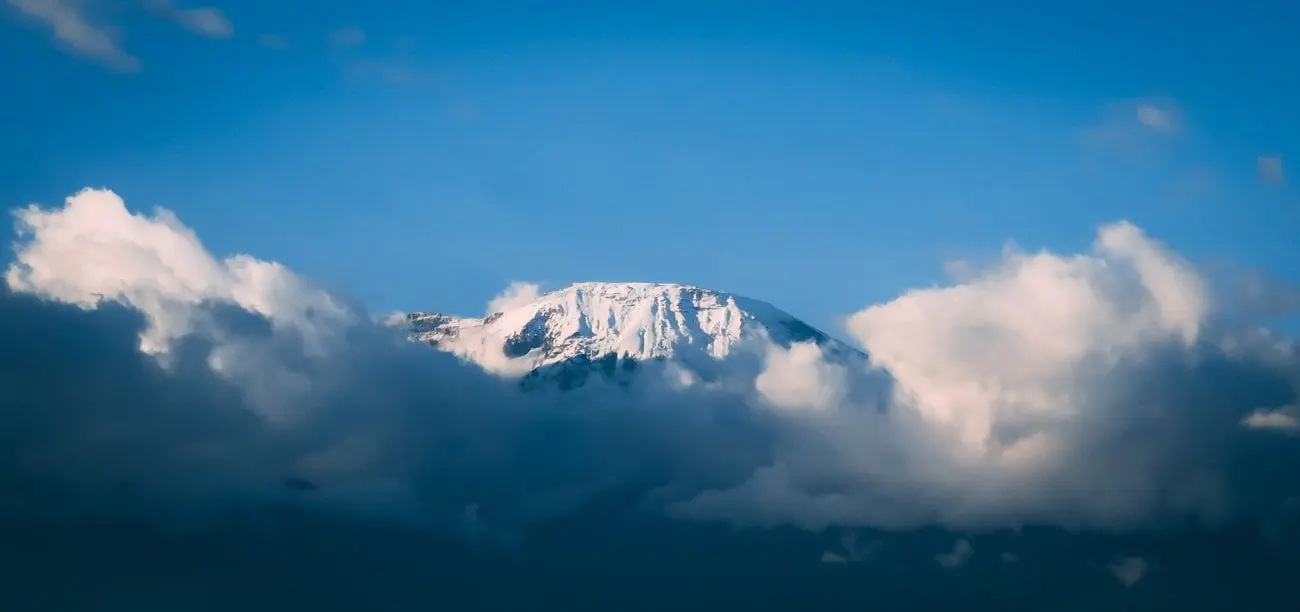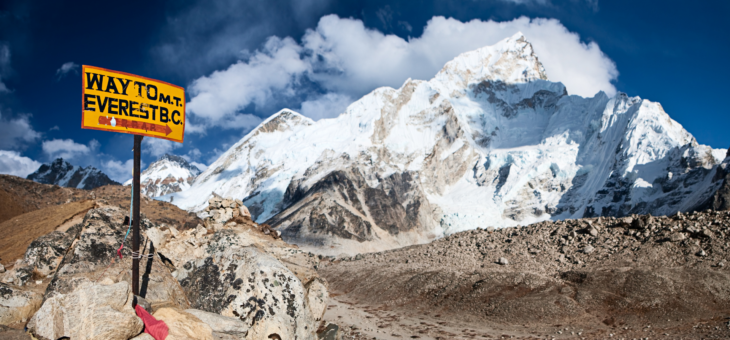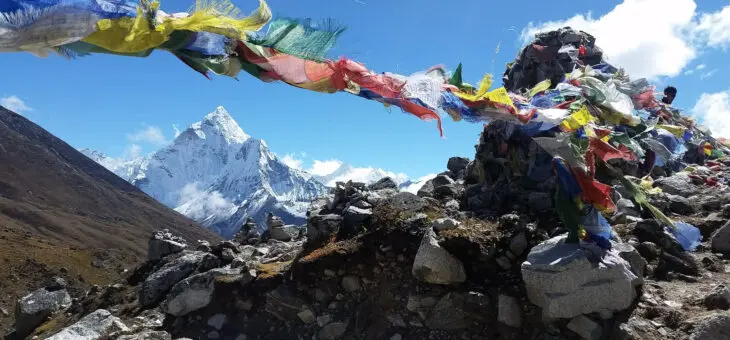Trekking to Mera Peak; an expedition report. This trip report was written by James McManus (aka Jam) who owns and runs Earth’s Edge. He has over 20 year’s experience and leads many expeditions to altitude each year.
We made it to Kathmandu with no issues and spent the evening sorting rental gear and having food. The following day we set out to the domestic airport to fly to Lukla and the usual antics started!
It’s an uphill battle to get all your team and their bags on the one flight to Lukla! As the baggage allowance is only 10kg per person, trying to avoid excess baggage charges is always a challenge and good banter. In the end, we sent six people by helicopter and five by plane to Lukla.
We also sent 120kg of climbing equipment such as mountaineering boots and crampons ( which we didn’t need on the walk-in) directly to Khare by helicopter. Khare is the last village en route to Mera Peak, 9 days trek from Lukla!
In total, we had 148 kg of excess checked baggage which was sent by cargo plane, it cost 12,700 rupees or €100, a fraction of what it should cost. Smiling goes a long way in Nepal and just like every other country, it’s not what you know it’s who you know!

Trekking to Mera Peak
When leaving Lukla it was great to be walking in the opposite direction to everyone else who were heading for Everest Base Camp. The trail to Mera Peak is much quieter than the Everest Base Camp trail and we met very few other Westerners.
The first 4 days trekking were really nice as we crossed over rolling foothills covered in rhododendron. We spent the second night in Pangoma, one of the wealthiest villages in the area. Apparently the owners of Tara airlines, Yeti Airlines and Himalayas airlines all hail from this one village!
The weather was fairly mixed the first 4 days and we had two thunderstorms; thankfully both at night. This precipitation fell as snow on the higher ground which we first encountered crossing the Kongke Luchho La pass (4,450m) on Day 8 of the itinerary. This made for some tough underfoot conditions on the descent after the pass.
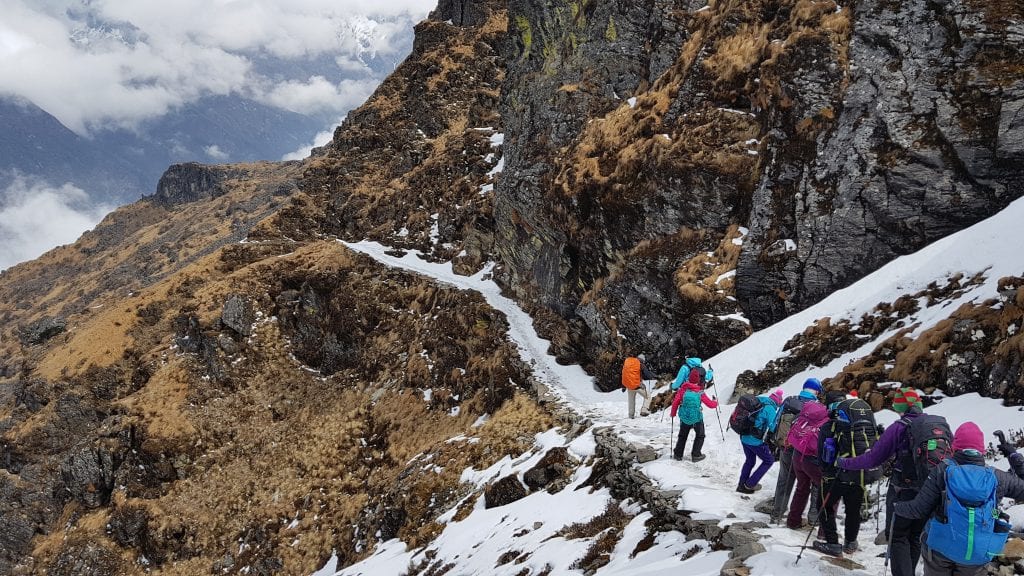
Food on Mera Peak
In Nepal, because there is no way to refrigerate meat on treks, we are on a vegetarian diet. While we do our best to eat as many eggs and beans as possible, it’s predominantly a carbohydrate based diet.
This excess of carbs leads to a fairly violent flatulence issue for both Barry and Cormac. This affected me personally as I was sharing a room or tent with either one or both of them each night!
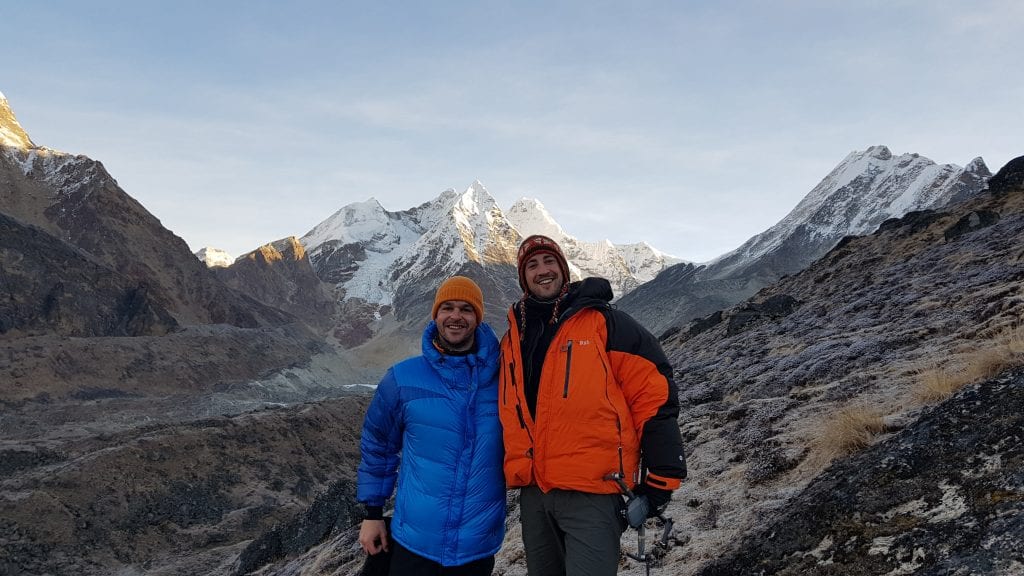
Most evenings “Shithead” was the card game of choice, which provided endless entertainment. I was delighted not to lose one game in the 23 days especially since the competition was so fierce. Aisling and Kieran were serial losers, both losing four games in a row on at least one occasion! More training required for sure!
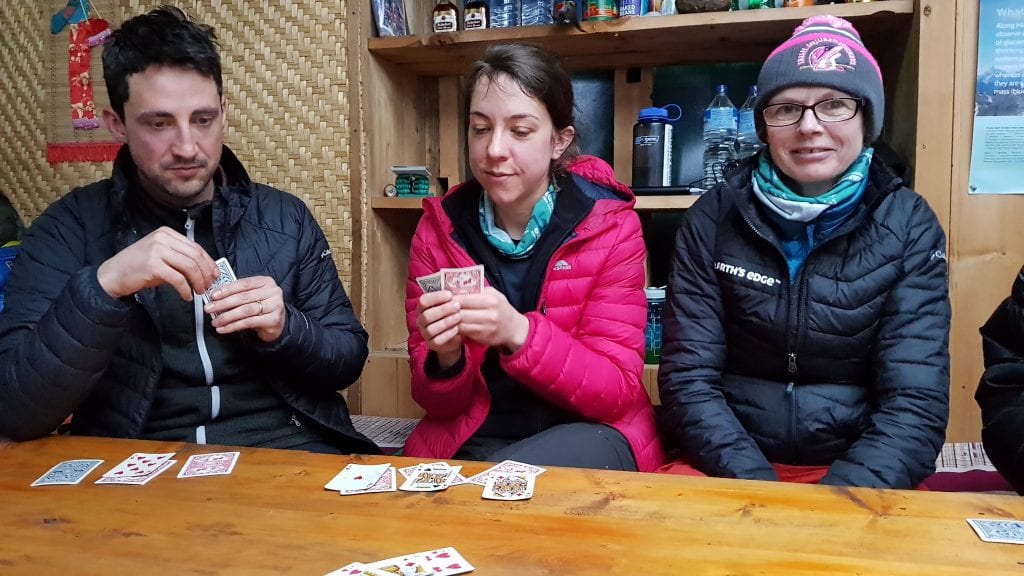
While we did get some great views on the walk in, we didn’t get perfect cloud-free weather until we reached Khare (4,900m). We got great views of Mera Peak en route to high camp. We also saw a huge avalanche across the valley, luckily nowhere near our route.
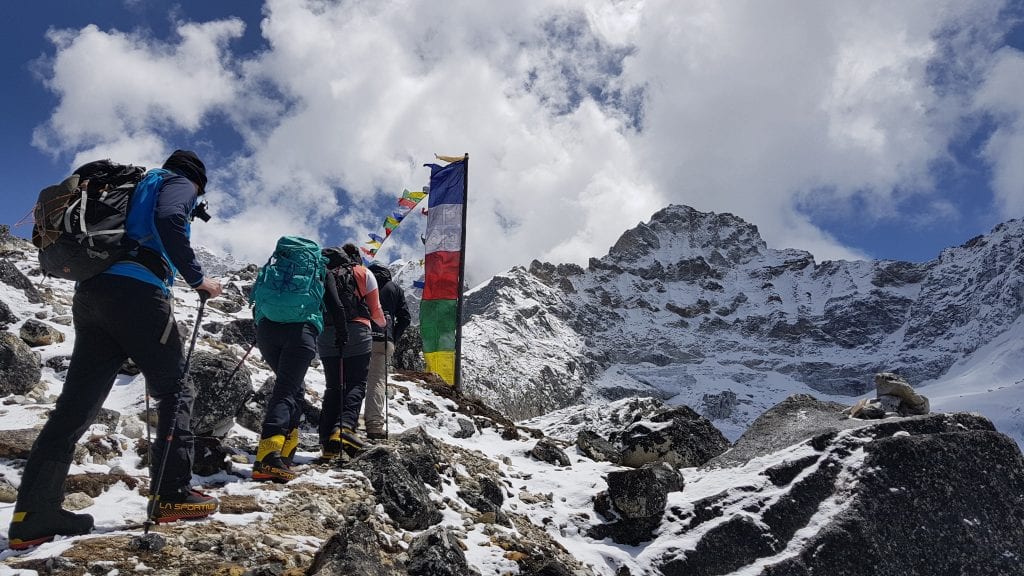
Difficulty on the trail
When trekking in Nepal you share tea houses with other trekkers and there is a much bigger opportunity to interact with other climbers. This really adds to the experience, but there are negative sides to it too.
While on our rest day in Khare a group of 15 people from Wyoming and Colorado returned from a failed summit attempt with tales of huge crevasses, post-holing, difficulty route finding and risk of avalanche on the summit route.
It was obvious to me that this was pure and utter bullshit but within my group, it did create an unnecessary sense of worry. So my top tip for trekking or mountaineering in Nepal is; if someone is offering free advice voluntarily about the conditions of the route ahead, take it with a pinch of salt.
The route from Khare up to Base Camp (5,200m) takes just two hours and the tents were pitched when we got there which was a great help. After a good night’s sleep there we arose to glorious weather and stunning views of the surrounding peaks.
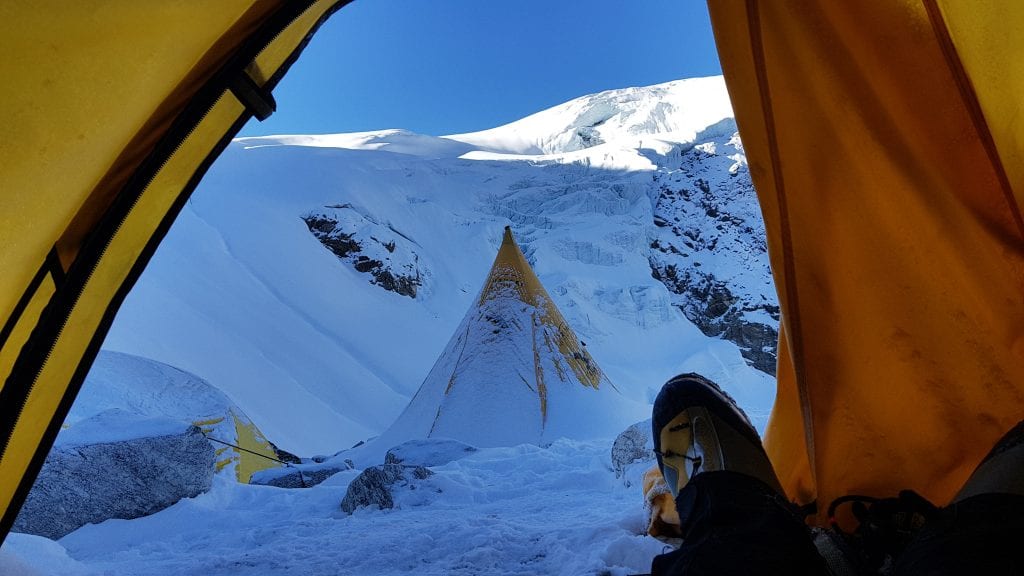
Five minutes outside base camp we reach the glacier and the point where we put on harnesses and rope up. The route to high camp (5,800m) takes about six hours and it’s very straight forward. The main challenge can be the heat, on a clear day the sun bounces off the snow and creates oven-like heat, which makes walking very tough.
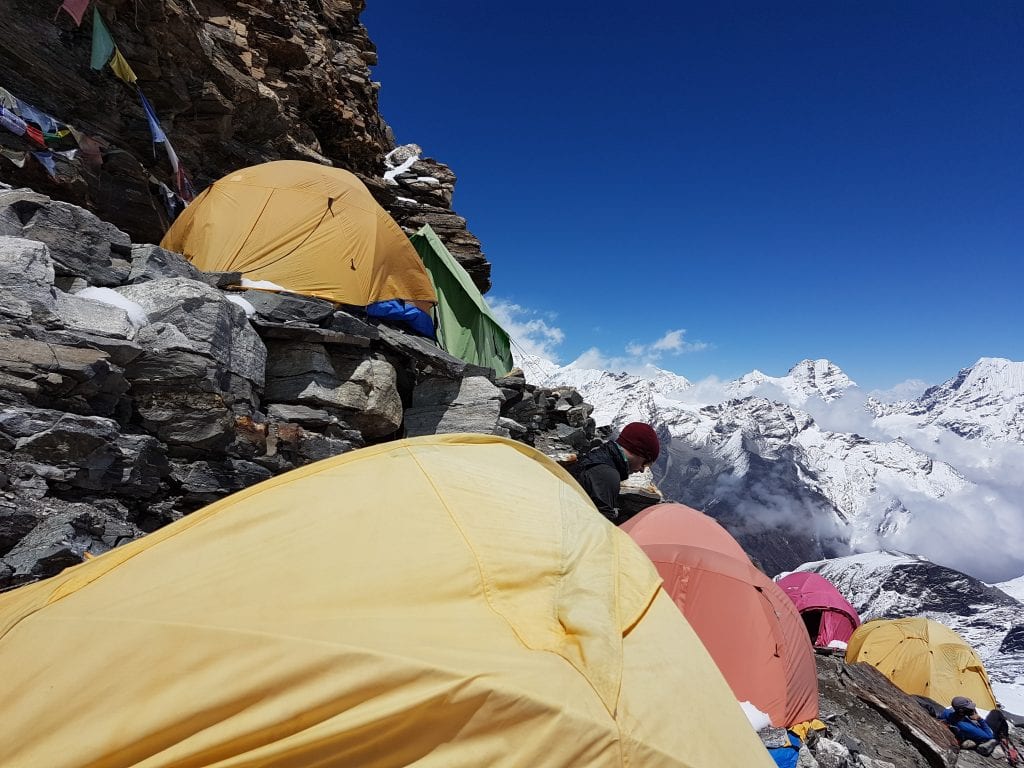
Sleeping at 5,800m is very tough but because my team was so well acclimatised everyone did really well to get some sleep there.
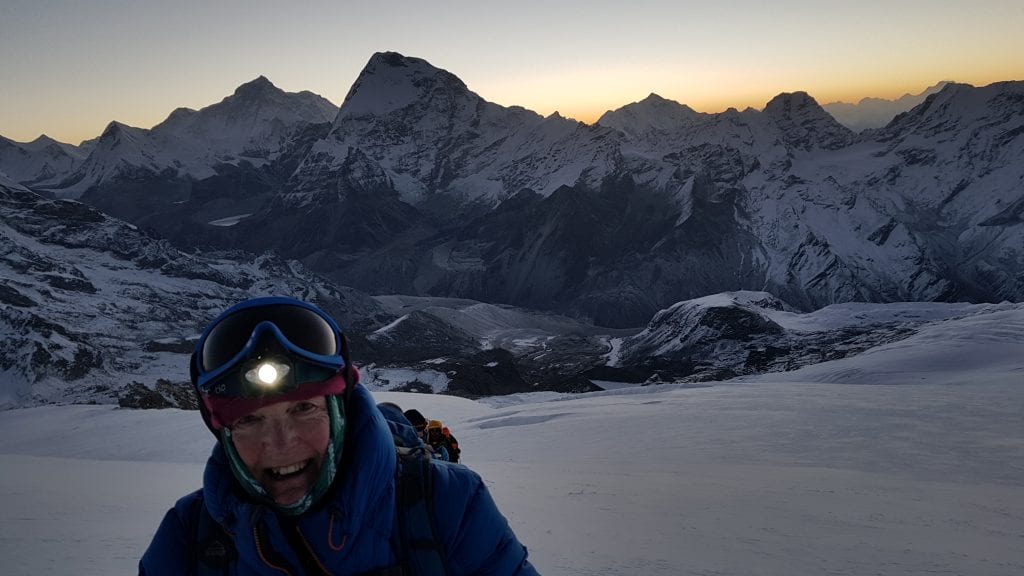
Summiting Mera Peak
We rose at about 2 am to leave for the summit and got moving at 3 am. The weather for the summit was amazing with very little wind all the way to the top. Once the sun starts to come you get these amazing panoramic views of the Himalayas.
We managed to get 10 of our team of 11 to the summit. Niamh decided to stay in high camp and not to attempt the summit. She was injured leading up to the trip and didn’t manage to do as much training as she wanted prior to departure. Considering this she did an amazing job getting to high camp and has great potential as a high-altitude mountaineer.
The success rate on Mera Peak isn’t very high so I was delighted to get over 90% of my team to the top. I was particularly impressed with Rachel and Grace who were on their first trek ever! They were both very strong throughout the trip and reached the top with relative ease.
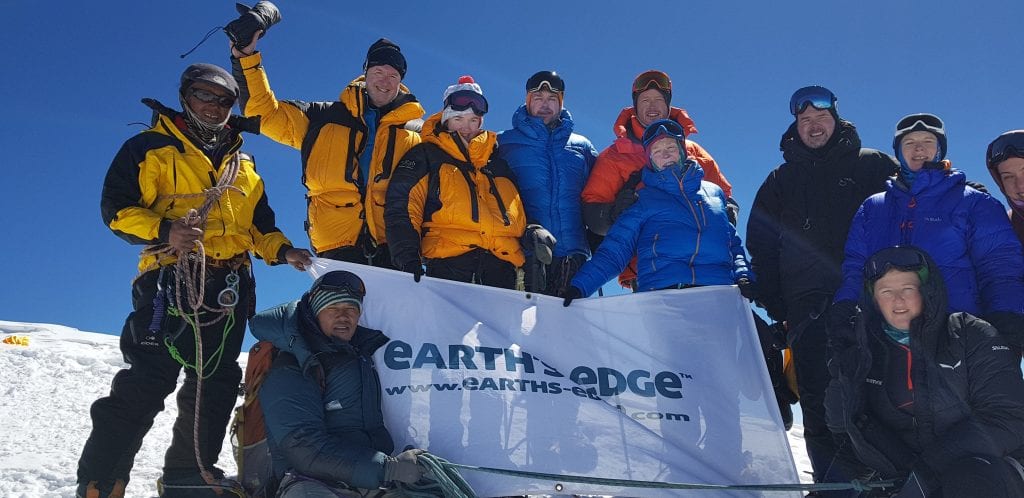
I have to say the view from the summit was truly magical, you really get the perfect view of Everest, towering impressively over the other 8,000m peaks in the area.
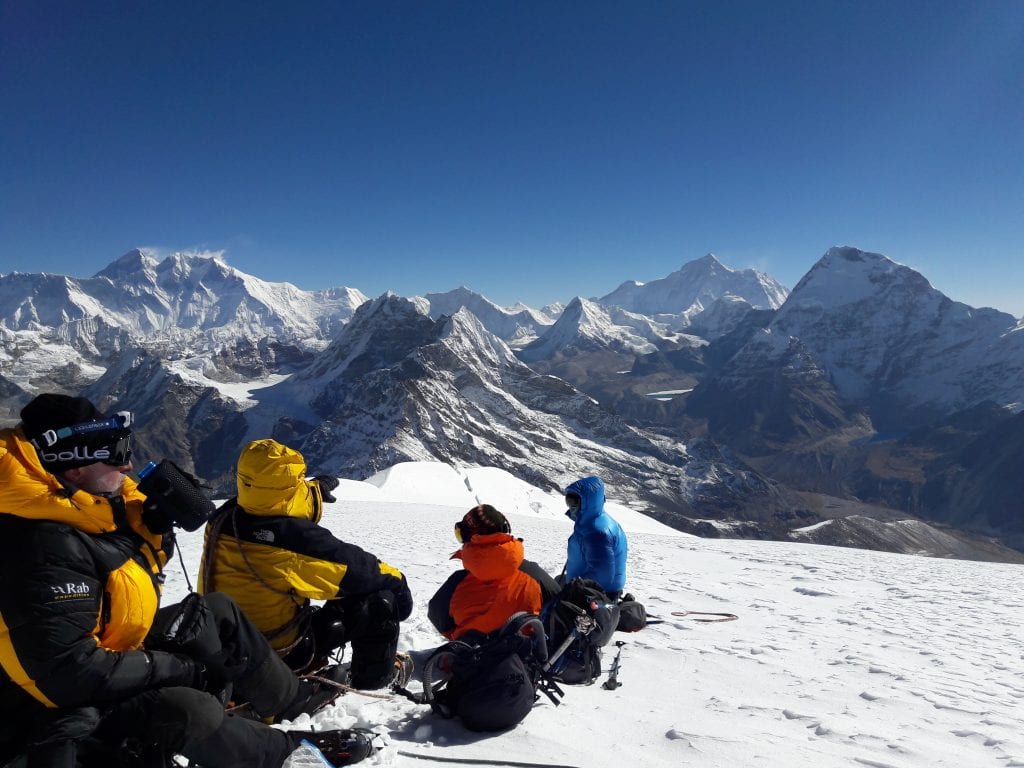
The walkout from Mera Peak takes three days, none of which are short and include climbing the Zatrwa La pass which is no easy task after taking on a 6,476m peak. Everyone was exhausted when we reached Lukla, but after a shower and a meal, we decided to head out!
While I’m not normally a fan of Irish bars, we had a great night; especially when they put on the Nepali music, as the whole team and our crew of Sherpas were rocking it on the dance floor!
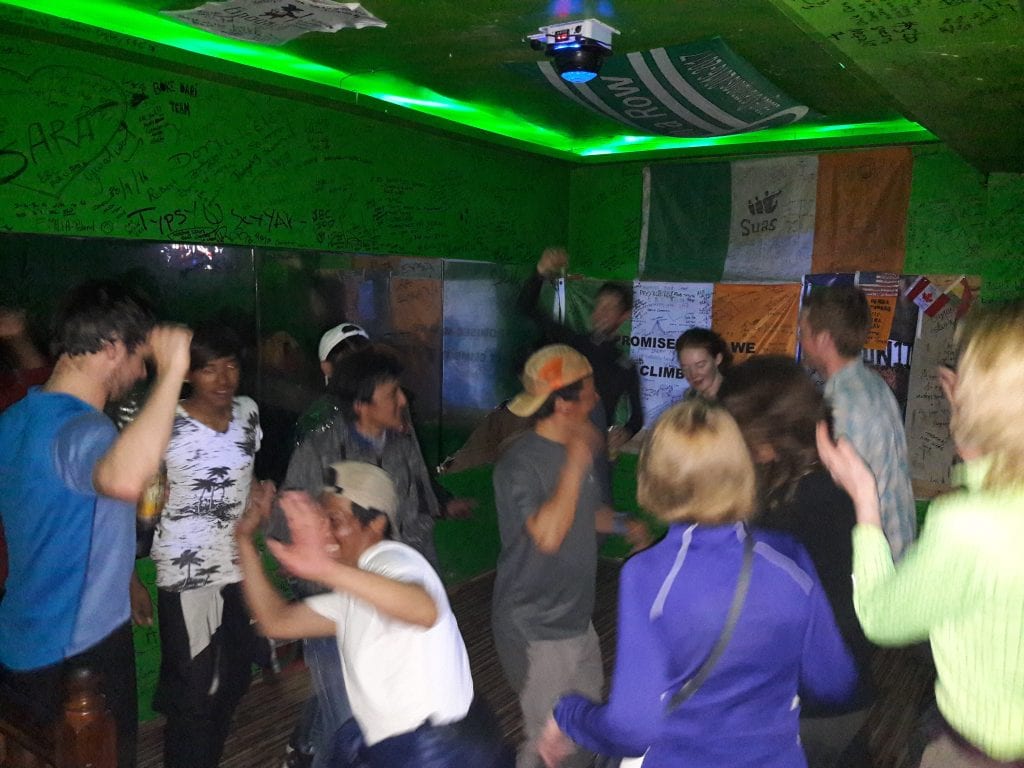
We didn’t need our spare summit days so we had two free days after the trek. We used these to go rafting on the upper Sun Kosi (river of gold) which was great fun. Our riverside accommodation was located at just 700m above sea level, a perfect resting place after the climb and before the flight home. We also got barbecued chicken and wild boar each night too!
It really was a great trip with really incredible people which I would highly recommend.
If you want more information on trekking to Mera Peak or to book Mera Peak, you can contact us here.
